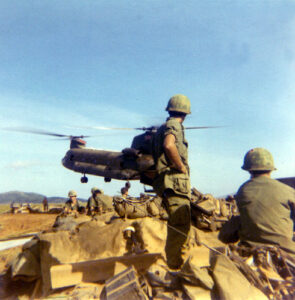
The Summer ’69 (1969) Offensive began on May 13 although the MACV (Military Assistance Command – Vietnam) headquarters in Saigon thought it started in June of that year. It’s what happens when the REMFs aren’t informed about what’s really happening on the battlefield. Or maybe they’re reading inflated bogus sanitized ‘reports’ sent from the various division level PIOs (public information officers) to MACV HQ that are then broadcast over AFVN to ease the anxiety level of the Saigon super troopers in and around the office areas.
The war was intensifying after the winter monsoon season – the natives were awakening.
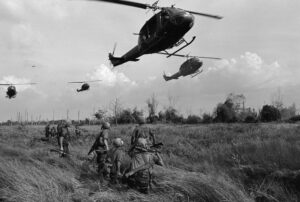
Back to May 13 – the battle began at 1030 hours with a combat assault of the C/3/21 grunts into the Nui Yon Hill area south of Tam Ky. The first flight landed without incident in the landing zone – but as the second flight neared touchdown, the bad guys began firing with a vengeance. The grunts quickly evacuated the helicopters and ran for cover to the LZ tree lines. Two slicks were shot down on the LZ – immobilized and unable to fly out under power.
During that afternoon, Rattler operations via company radio ordered me to destroy both grounded helicopters. ‘Roger that’, I can do it. Lining up on the grounded helicopters, rocket sight on the targets, thumb on the weapons release button – ready to fire – suddenly a screaming radio call from Operations to abort. Stupidly, I complied. During the night, Mr. Charlie completely stripped both helicopters leaving only the bare airframes. Most importantly, all the aircraft radios with set frequencies now belonged to Charlie. Great decision! I never did find out WHO exactly gave the countermand order. No doubt some REMF worried about his future career.

The tactical situation throughout the 196th area of operations became so alarming in mid-May that aviation elements from the 101st Airborne Division were sent to help suppress the increased enemy activity. The 101st aircrews swooped into Chu Lai and the 71st AHC area with much swaggering bravado. Their first day out claimed several KIAs and loss of aircraft – they were quite subdued that evening back in the 71st company area.
May would carry forward into June – more dangerous engagements would follow. June 16 would record the shootdown of two Firebird helicopter gunships – both shot out of the sky on the same pass by, no doubt, the same bad guy gunner (give that man a medal). Miraculously, both crews were rescued after being chased through the elephant grass while escaping blazing gun fire from their enemy pursuers. 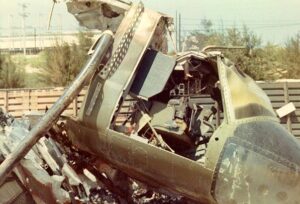
The Firebirds gunships burned to the ground as a Memorial to lost combat. In the month of June 1969, the Firebirds experienced the total loss of every gunship in the 71st Assault Helicopter Company – undoubtedly a Vietnam wartime record.
As the summer temperatures and humidity increased, so did the battle activity. Throughout the summer months every Firebirds ‘call out’ resulted in fierce enemy engagements. June 27 was a callout to assist a grunt company attempting to move up a hillside near LZ East. As I engaged the target area, four green tracer streams surrounded my aircraft, we were literally flying in between the side-by-side tracer streams. The four-barrel Soviet ZSU-23 gun was using us for target practice. Immediately diving downward to the right allowed us to miraculously escape unharmed. Would have been nice for the ground grunt commander to warn about the ZSU that had previously turned back a flight of two F-4 Phantom jets.
At the Tra Bong airfield south of Chu Lai an entire aircrew was wounded by mortar fire as they walked across the open tarmac ramp. Sent to recover the lone helicopter sitting on the ramp we watched as incoming mortar rounds impacted all around the aircraft. One very brave Snake Doctor pilot ran across the ramp, jumped in, started the aircraft, and flew away amid the impacting rounds and showering ground debris.
August would prove to be the most disastrous month of the Summer ’69. Kelly McHugh would be horrifically wounded on August 16 when a .51 cal. round severed his left leg below the knee. When lifted from his pilot seat, his lower leg was held by a shred of muscle – the docs at the Danang surgical hospital amazingly re-attached the leg (this in 1969!).
Two days later Ted Shulsen along with his co-pilot were both wounded attempting to resupply a ground unit that had been under fire and pinned down for several days. The unit badly needed ammo and water – dead GI bodies were literally stacked up on the perimeter to provide barriers from incoming fire. Although wounded, he was able to fly out of the LZ and land at LZ Center.
Both pilots were evacuated as the aircraft sat running unattended. I crash/slid my gunship onto the eastern spine of Center’s ridge and my co-pilot jumped into the damaged aircraft and flew it to LZ Baldy where it was declared unflyable. The crew chief and door gunner from this flight would both perish the next day while crewing Rattler 19, the command & control aircraft for the 3/21 Inf. Bn. Commander.
Infantry commanders were famous for always wanting to ‘go lower’ when flying over their AO. Gerry Silverstein was piloting on August 19 when he was caught in a crossfire of twin .51 cal. guns. No doubt the battalion commander wanted to go down for a closer look – bad idea. The uncontrollable aircraft did a full inflight rollover (eyewitness accounts) before impacting the ground exploding in a huge fireball. The entire 3/21 command staff and all aboard perished. The bodies would not be recovered for six days – very bad time in the AO.
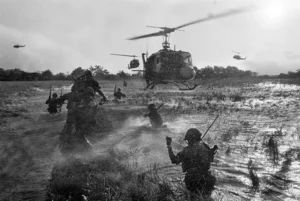
While these aerial fire support missions were ongoing, the aviation ‘higher ups’ decided to impose stringent rules of engagement. If you received ground fire, ‘return fire’ was authorized only against an identified pin-point target. This diktat might work for the operations officer bunkered in the flight line shack, but when we received fire, we immediately and without hesitation returned fire. Defending against this imperial imperative our crews would shoot holes in our aircraft to confirm the dire necessity to swiftly engage the ground fire guys – pinpoint or not (more often not).
The Summer ’69 combat peaked on September 22 – Black Monday – with Operation Frederick Hill. This was the wet dream of the 196th Brigade Commander who chose to, once again, return to Nui Yon Hill. The 3/21 Infantry Battalion had fought a three-day battle there in May losing five American KIAs and 18 wounded not to mention the loss of three 71st AHC helicopters shot down (and not recovered) in the landing zone. C/3/21 was again tasked for the operation that began at 0945 hours with a helicopter air assault into an area of ‘unknown’ enemy strength (what brilliant military mind conceived this operation?).
CW2 Barry Alexander was killed in the first lift – he was ten days from returning home. The flight assault was led by the 71st AHC C.O. who immediately, after completing the first lift, retreated to the 3/21 headquarters on LZ Center to ‘direct’ the flight operations. The brigade commander would ride safely out of harm’s way in his C&C helicopter above the fight. U.S. commanders never learned from earlier battles but continued to sacrifice American lives. The result of this bloody battle was always the same – the Americans left the area with no positive or decisive ‘victory.’ The bad guys simply vanished in the surrounding countryside.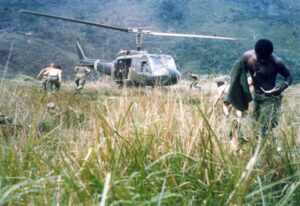
After the Summer ’69 devastation in the 196th AO, the troops had had enough. So much so that one infantry company in the 196th simply refused to ‘move out’ – refused, said no, we aren’t moving, when given the order. The battalion and company level commanders almost certainly realized the troops dissatisfaction as well but continued with missions to keep them occupied. By then, most knew any further actions would prove fruitless to defeat the hometown gangs and everyone hoped the war would soon be over.
A very brilliant decision was the ‘Eagle Flights’ concept initiated by the 4/31st Infantry Battalion commander in late 1969. Selected small platoon sized units would be air-lifted into a pre-designated area for daytime only operations departing the fire support base in the morning and returning to the fire support base just before dark. Eagle Flights were brilliant for two purposes: 1) the mission against the enemy could continue, and 2) the grunts returned to the relative safety of the LZ/FSB at night – reducing American casualties.
The 71st relocated from the beach-side resort-like Chu Lai to the Martian landscape of Hawk Hill. The Army commanders thrive on inflicting misery into the soldiers. Generals and Colonels move pins on maps for the units follow.
(c) Copyright – 2023 Vic Bandini